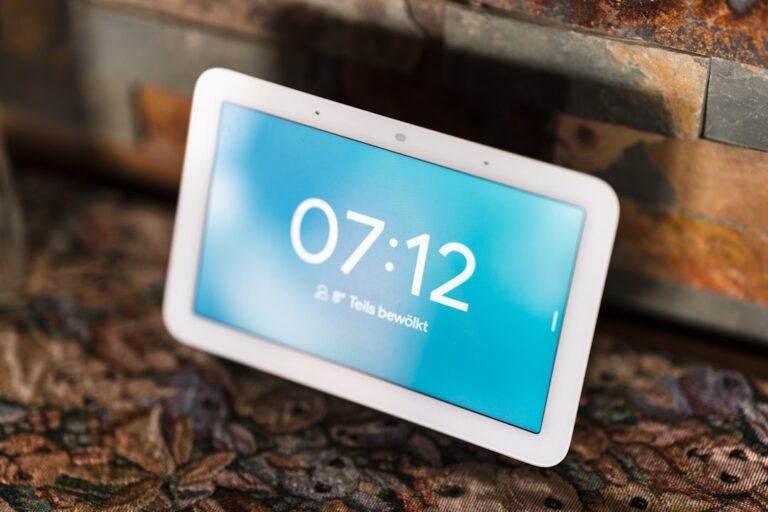A core drill is a specialized tool used for drilling precise holes in various materials such as concrete, masonry, and stone. It consists of a hollow, cylindrical drill bit with diamond or carbide teeth that remove material as it rotates. The core drill is attached to a motor, which provides the necessary power to drive the drill bit through the material. Core drills come in a variety of sizes and configurations, including handheld, rig-mounted, and stand-mounted models. They are commonly used in construction, plumbing, electrical, and HVAC industries for tasks such as installing pipes, conduits, and anchor bolts.
Core drills are designed to produce clean, accurate holes with minimal effort. They are capable of drilling holes of various diameters and depths, depending on the specific requirements of the job. The core drill’s ability to remove a cylindrical core of material makes it ideal for creating openings for plumbing and electrical installations. Additionally, core drills are essential for creating holes for dowels and anchors in concrete and masonry structures. Understanding the capabilities and limitations of core drills is crucial for selecting the right equipment and using it safely and effectively.
Key Takeaways
- Core drills are used to create holes in hard materials such as concrete, masonry, and stone.
- When choosing the right equipment, consider the material being drilled, the size of the hole needed, and the power source available.
- Safety precautions include wearing appropriate personal protective equipment, securing the workpiece, and using the drill at the correct speed and pressure.
- Proper technique involves starting the drill at a low speed, gradually increasing the speed, and using a steady, even pressure.
- Maintaining the core drill includes regular cleaning, lubrication, and inspection of the drill bits and other components.
Choosing the Right Equipment
When choosing a core drill, it is essential to consider the specific requirements of the job, including the material to be drilled, the size and depth of the hole, and the available power source. Handheld core drills are suitable for small to medium-sized jobs and offer excellent maneuverability in tight spaces. They are powered by electricity or battery and are ideal for drilling holes in walls, floors, and ceilings. Rig-mounted core drills are designed for larger, more demanding tasks and are typically powered by electricity or hydraulic systems. They are mounted on a stand or rig to provide stability and precision when drilling into heavy materials such as reinforced concrete.
Stand-mounted core drills are the most powerful and versatile option, capable of drilling large-diameter holes to significant depths. They are commonly used in industrial and construction settings for heavy-duty applications. Stand-mounted core drills are available in both handheld and rig-mounted configurations, providing flexibility for different job requirements. When selecting a core drill, it is crucial to consider the compatibility of the drill bit with the material to be drilled. Diamond-tipped drill bits are suitable for drilling hard materials such as concrete and stone, while carbide-tipped bits are more appropriate for softer materials like brick and asphalt.
Safety Precautions
Safety is paramount when using a core drill due to the potential hazards associated with drilling into hard materials. Before operating a core drill, it is essential to wear appropriate personal protective equipment (PPE), including safety glasses, hearing protection, gloves, and a dust mask. The use of a dust extraction system is also recommended to minimize exposure to harmful airborne particles generated during drilling. Additionally, it is crucial to secure the workpiece properly to prevent movement or slippage during drilling, which can lead to accidents or injuries.
Proper training and familiarization with the core drill’s operation and safety features are essential for all operators. It is crucial to read and understand the manufacturer’s instructions and safety guidelines before using the equipment. Operators should be aware of potential hazards such as kickback, binding, and overheating, and take appropriate precautions to mitigate these risks. Regular inspection and maintenance of the core drill and its components are also essential for safe operation. Any damaged or worn parts should be replaced immediately to prevent equipment failure during use.
Proper Technique
| Technique | Definition | Importance |
|---|---|---|
| Proper Grip | The correct way to hold the equipment or tool | Prevents injuries and allows for better control |
| Body Alignment | Positioning the body in a way that supports the movement | Reduces strain on muscles and joints |
| Breathing | Using the breath to support the movement | Improves oxygen flow and energy efficiency |
Using the proper technique when operating a core drill is essential for achieving accurate and efficient results while minimizing the risk of injury or equipment damage. Before starting the drilling process, it is crucial to mark the center of the hole location accurately using a pencil or marker. This ensures that the drill bit remains on target throughout the drilling process. When drilling into hard materials such as concrete or masonry, it is essential to start at a low speed and gradually increase the speed as the drill bit penetrates the material. This helps prevent overheating and premature wear of the drill bit.
Maintaining consistent pressure on the core drill while drilling is crucial for achieving smooth, clean holes without causing excessive strain on the equipment. It is important to avoid forcing the drill bit through the material, as this can lead to binding and kickback. Instead, allowing the drill bit to do the work at a steady pace will produce better results with less effort. When drilling deeper holes, periodically retracting the drill bit to clear away debris and cool the bit can help maintain performance and prolong its lifespan. Finally, it is essential to follow proper shutdown procedures when finishing drilling to prevent damage to the equipment and ensure safe operation.
Maintaining the Core Drill
Proper maintenance of a core drill is essential for ensuring its longevity and performance. Regular inspection of the drill bit for wear and damage is crucial, as worn or damaged bits can compromise drilling efficiency and accuracy. It is important to replace worn or damaged bits promptly to maintain optimal performance. Additionally, keeping the drill bit clean and free of debris helps prevent overheating and premature wear. Using a lubricant or coolant during drilling can help dissipate heat and prolong the life of the drill bit.
Regular inspection of the motor, gearbox, and other components of the core drill is also essential for identifying any signs of wear or damage. Any abnormal noises or vibrations during operation should be investigated immediately to prevent further damage to the equipment. Lubricating moving parts as recommended by the manufacturer helps maintain smooth operation and prevents premature wear. Proper storage of the core drill in a clean, dry environment when not in use helps prevent corrosion and damage to sensitive components.
Troubleshooting Common Issues

Despite proper maintenance and care, core drills may experience common issues that can affect their performance. One common issue is overheating of the drill bit, which can occur when drilling hard materials at high speeds without proper cooling or lubrication. To address this issue, it is essential to reduce drilling speed, use a coolant or lubricant, and periodically retract the drill bit to allow it to cool down. Another common issue is binding of the drill bit in the material, which can occur when excessive force is applied or when drilling into uneven surfaces. To resolve this issue, it is important to reduce pressure on the drill bit and ensure that the workpiece is properly secured.
In some cases, core drills may experience loss of power or erratic operation due to electrical or mechanical issues. It is essential to inspect the power source, electrical connections, and motor components for any signs of damage or wear. Additionally, checking for debris or obstructions in the gearbox or drive mechanism can help identify potential causes of power loss or erratic operation. If these troubleshooting steps do not resolve the issue, it may be necessary to consult a qualified technician for further diagnosis and repair.
Advanced Tips for Efficiency
For advanced users looking to maximize efficiency when using a core drill, there are several tips and techniques that can help streamline operations and achieve better results. Using specialized diamond-tipped drill bits designed for specific materials can improve drilling speed and accuracy while reducing wear on the equipment. Additionally, using a rotary hammer function in combination with a core drill can help break up tough materials before drilling, making the process more efficient.
When drilling multiple holes in a row, using a template or guide system can help ensure consistent hole placement and spacing while reducing setup time between holes. For stand-mounted core drills, using a vacuum base attachment can provide additional stability and precision when drilling into large or heavy materials. Finally, investing in high-quality accessories such as dust extraction systems, cooling systems, and ergonomic handles can improve operator comfort and safety while enhancing overall productivity.
In conclusion, understanding the core drill’s capabilities and limitations is crucial for selecting the right equipment and using it safely and effectively. Choosing the appropriate core drill for the job at hand is essential for achieving accurate results while minimizing effort and risk. Proper technique, maintenance, troubleshooting, and advanced tips can help operators maximize efficiency and performance when using a core drill for various applications in construction, plumbing, electrical, and HVAC industries.
Sure, here’s a paragraph mentioning a related article to core drill:
If you’re interested in learning more about core drilling and its applications, be sure to check out the article “The Ultimate Guide to Core Drilling” on AreYouFabulous.com. This comprehensive guide covers everything from the basics of core drilling to advanced techniques and tips for maximizing efficiency. Whether you’re a beginner looking to understand the fundamentals or a seasoned professional seeking new insights, this article is a valuable resource for anyone involved in the construction or engineering industry.
FAQs
What is a core drill?
A core drill is a specialized tool used to create holes in hard materials such as concrete, masonry, and stone. It is commonly used in construction and renovation projects.
How does a core drill work?
A core drill works by rotating a hollow drill bit to remove a cylindrical core of material from the surface. The drill bit is equipped with diamond or carbide cutting edges to effectively cut through hard materials.
What are the common applications of core drills?
Core drills are commonly used for creating holes for plumbing, electrical, and HVAC installations in concrete walls, floors, and ceilings. They are also used for creating holes for dowels, anchors, and other structural connections.
What are the different types of core drills?
There are handheld core drills, rig-mounted core drills, and stand-mounted core drills. Handheld core drills are portable and suitable for small-scale projects, while rig-mounted and stand-mounted core drills are used for larger and more demanding applications.
What safety precautions should be taken when using a core drill?
When using a core drill, it is important to wear appropriate personal protective equipment such as safety goggles, gloves, and hearing protection. Additionally, the drill should be securely anchored to prevent it from moving during operation, and the operator should be trained in safe drilling practices.
What are the maintenance requirements for a core drill?
Regular maintenance of a core drill includes cleaning the drill bit and the drill motor, checking for any signs of wear or damage, and lubricating moving parts as needed. It is also important to follow the manufacturer’s guidelines for maintenance and servicing.













+ There are no comments
Add yours